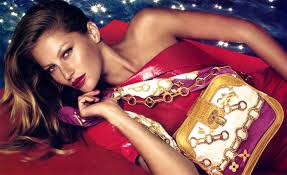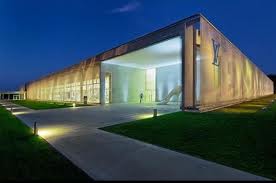Business mission statement of Louis Vuitton is to represent the most refined
qualities of Western "Art de Vivre" around the world. LV must continue
to be synonymous with both elegance and creativity. Our products, and
the cultural values they embody, blend tradition and innovation, and
kindle dream and fantasy.
- Be creative and innovate
- Aim for product excellence
- Bolster the image of our brands with passionate determination
- Act as entrepreneurs
- Strive to be the best in all we do
SWOT analysis:
Strengths: Louis Vuitton is one of the oldest fashion houses in the world, easy recognizable by its logo LV and monogram canvas. The exeptional high quality, innovation, craftmaship, the association with art and architecture define the strenght of Loui Vuitton. The brand has an international wealthy clientele, including celebrities and VIPs. Its products are available in its own exclusive stores and through Luisvuitton.com, accessible anywhere in the world. LV offers also services for custom made products.
Weaknesses: Louis Vuitton is the number one world's most counterfeit brand, imitations affect brand's sales. Another weakness is restricted retail opportunity, the company distributes its products through its own stores and doesn't have discount sales, which makes the business dependable on economic conditions. If a depression occurs, the sales growth slows down sharply.
Opportunities: Expansion in emerging markets, such as China, Russia, India, Taiwan, Singapore etc. Luis Vuitton
has been focusing on increasing its investment in such emerging economies where high growth rates can be experienced. Louis Vuitton World's cup coming up in 2013 is also an opportunity for brand's exhibition.
Threats:
Increased counterfeit crime will hurt the brand image .The abundance of counterfeit goods is affecting the sales. It is estimated that a loss due to counterfeit products converts in 6 billion Euro ($8.5b). The global economy; economic depression or recession, affects the sales as happened in 2002 and 2008.
Competitive advantage
Louis Vuitton is known for using high quality raw materials in all of its products, the company has an empowering position to
observe its products quality by marketing them through its own stores all over the world . Since the founding, the products are made by hand which differentiate the brand among its competitors in the industry. Before 2005, it took 20 to 30 craftsmen to put together each Louis Vuitton bag. Over the course of about eight days, separate workers would
sew together leather panels, glue in linings and attach handles. For years the company paid far more attention to product design, craftsmanship and image than
to the mechanics of keeping their stores stocked. With help from management consultants at McKinsey & Co., Vuitton set
out to make its manufacturing process more flexible, borrowing
techniques from car makers companies. Today, clusters of six to 12 workers, each of them performing several
tasks, make LV-logo bags in a single day. The new settings improved company's production and the sales rose to 9% from the previous method of manufacturing.
The reorganization extended beyond the factory floor. A distribution
center in France used to send products directly to Vuitton's stores
around the world. Now, the company is building a global distribution hub
outside of Paris that will ship to six regional distribution centers:
two in Japan, two elsewhere in Asia, one in the U.S. and one near Paris
for European orders. Within a week of a product launch, stores around
the world feed sales information to France and production is adjusted
accordingly. Factories work on a daily schedule, compared to a weekly
one before the reorganization.
The final stage of the reorganization expanded to the boutiques and the stores for a better customer service and more efficiency in employees performance . In the past, salespeople advising customers would disappear into stockrooms when products weren't available on the shop floor. Now, Vuitton assigns a few employees at each store to the stockroom. At a
large new store on Paris's Champs-Elysees, items are sent via service
elevator from a basement stockroom to the cash register. They arrive
wrapped in tissue paper.
Strategic Directions
Louis Vuitton is a cash cow. It accounts for 37% of its group sales, LVMH, and most of its profits. Along with its leather goods, through product development strategy, LV has increased the sales by introducing products such as jewelery, watches, books, sunglasses and a clothing line. Louis Vuitton has always transcended barriers across artistic,
technical, and intellectual disciplines. Inaugurated in 2006 on the
seventh floor of the Champs-Elysees Maison, the Espace Louis Vuitton is
a space of artistic and cultural expression. In the future, will
open several Maisons Louis Vuitton, a truly unique concept that allies
shopping, luxury, leisure, art, and culture.
Target Market
LV targets high-income costumers of both genders.
The four Ps.
Product
Louis Vuitton does not only offer to its customers unique designs and high controlled quality products, but also inducts them to form attachments by giving to each product a name instead of a serial number. The company has a special orders service for custom made products.
Place
Louis Vuitton retains immensely tight control from production to
distribution to sales. It distributes its products in its own stores located
throughout the world, which allows it to control product quality and
pricing. It also allows LV to prevent counterfeit products entering its
distribution channels. In addition, the company distributes its products
through LouisVuitton.com
Price
The core of Louis Vuitton pricing strategy is to sell its products to the same price no matter the location. Discounted and bargain sales are prohibited, once a product is taken out of
production, it retires and does not go to a discount outlet or online
discounter. Louis Vuitton has not had a sale in 156 years.
Promotion
Louis Vuitton promotes his product through multiple channels. In store promotion - trains the staff to tell the story of each product. It has also been trailblazing in the use of social media, online
and mobile, while maintaining the highest standards in print
advertising. The Louis Vuitton company carefully cultivates a celebrity following and has used famous models, musicians, and actors. Involvement in events such as Louis Vuitton's cup gives the brand a global visibility and recognition. The commercial (90 seconds) "Where will life take
you?" and translated into 13 different languages, was the first
Vuitton commercial ad ever and was directed by renowned French ad
director Bruno Aveillan.
Effective strategic planning
Louis Vuitton took the second place as the luxury marketer of the year, in 2010. The brand has continued its expansion in Asian markets as well as in emerging markets. Its sales growth increase it's steady at 15%.
"The fine equilibrium between tradition and innovation reflects the DNA
of Louis Vuitton. Products such as the Multicolore Monogram bags, the
fruit of a collaboration between Marc Jacobs (LV's artistic director) and the
contemporary artist Takashi Murakami, received a fantastic welcome. LV will continue working with this same creativity and respect for
quality. As a leader of the sector, the challenge is to continue growing
and still preserve the exclusivity and great quality the company has
always offered." - Yves Carcelle CEO at LV.
Sources: Businessweek.com bloomberg.com, dailynews, wikipedia, luoisvuitton.com lvmh.com










































